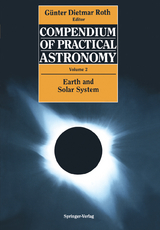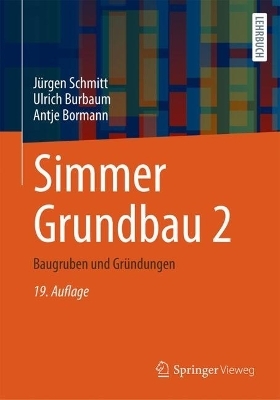Compendium of Practical Astronomy
Springer Berlin (Verlag)
978-3-540-54885-0 (ISBN)
Die englische Ausgabe on G. Roths berühmtem Handbuch für Sternfreunde ist überarbeitet und zum Teil beträchtlich ergänzt worden. In drei Bänden wird das Rüstzeug für astronomische Amateurbeobachtungen in unvergleichlicher Weise von hervorragenden Fachleuten zusammengestellt. Das Werk richtet sich an Beobachter und an Studenten von Oberschulen und Colleges.
It is a pleasure to present this work, which has been well received in Gennan-speaking countries through four editions, to the English-speaking reader. We feel that this is a unique publication in that it contains valuable material that cannot easily-if at all-be found elsewhere. We are grateful to the authors for reading through the English version of the text, and for responding promptly (for the most part) to our queries. Several authors have supplied us, on their own initiative or at our suggestion, with revised and updated manuscripts and with supplementary English references. We have striven to achieve a translation of H andbuch flir Sternfreunde which accurately presents the qualitative and quantitative scientific principles con tained within each chapter while maintaining the flavor of the original Ger man text. Where appropriate, we have inserted footnotes to clarify material which may have a different meaning and/or application in English-speaking countries from that in Gennany. When the first English edition of this work, Astronomy: A Handbook (translated by the late A. Beer), appeared in 1975, it contained 21 chapters. This new edition is over twice the length and contains 28 authored chap ters in three volumes. At Springer's request, we have devised a new title, Compendium of Practical Astronomy, to more accurately reflect the broad spectrum of topics and the vast body of infonnation contained within these pages.
Günter D. Roth, von Haus aus Diplomkaufmann, hat über Jahre als Geschäftsführer die astronomische Zeitschrift Sterne und Weltraum, deren Mitherausgeber er noch immer ist, geleitet. Selbst aktiver Beobachter, hat er Bestseller für Sternfreunde geschrieben. Günter D. Roth ist Ehrenmitglied der Vereinigung der Sternfreunde (VdS) e. V.
of Volume 2.- 13 The Sun.- 13.1 Introduction.- 13.2 Observations of the Sun.- 13.3 Sunspots.- 13.4 Photospheric Faculae.- 13.5 Chromospheric Faculae.- 13.6 Prominences and Filaments.- 13.7 Flares.- 13.8 Other Chromospheric Phenomena.- 13.9 Position Measurements of Solar Phenomena.- 13.10 Solar Photography.- 13.11 Conclusion.- References.- 14 Observations of Total Solar Eclipses.- 14.1 Photography of the Solar Corona.- 14.2 Special Astronomical Programs.- 14.3 Special Terrestrial Programs.- 14.4 The Observing Station.- References.- 15 The Moon.- 15.1 Problems and Ideas for Lunar Observations.- 15.2 Conditions of Visibility.- 15.3 Lunar Formations.- 15.4 Observational Projects.- References.- 16 Lunar Eclipses.- 16.1 Introduction.- 16.2 The Origin and Frequency of Lunar Eclipses.- 16.3 Theory and Prediction of Lunar Eclipses.- 16.4 Enlargement of the Earth's Shadow.- 16.5 Photometry of Lunar Eclipses.- 16.6 Scientific Conclusions from Photometric and Astrometric Results.- References.- 17 Occultations of Stars by the Moon.- 17.1 The Moon as an Astronomical Clock.- 17.2 Predictions.- 17.3 Timing of the Contacts.- 17.4 Grazing Occultations.- 17.5 Occultations of Planets.- 17.6 Photoelectric Registration.- References.- 18 Artificial Earth Satellites.- 18.1 Introduction.- 18.2 Satellite Orbits.- 18.3 Conditions of Visibility.- 18.4 Optical Observations.- 18.5 Professional Observing Techniques.- References.- 19 Observations of the Planets.- 19.1 The Purpose of and Tasks for Planetary Observations.- 19.2 Observing Equipment.- 19.3 Visibility of the Planets.- 19.4 The Representation of Planetary Observations.- 19.5 The Planets.- References.- 20 Comets.- 20.1 The Nature of Comets.- 20.2 Searching for Comets.- 20.3 Determining the Positions.- 20.4 Studies of Structure.- 20.5Special Techniques.- References.- 21 Meteors and Bolides.- 21.1 General Information on Meteors.- 21.2 Methods of Meteor Observation.- 21.3 Special Aspects of Observations.- 21.4 Orbit Determinations of Meteoroids.- References.- 22 Noctilucent Clouds, Polar Aurorae, and the Zodiacal Light.- 22.1 Noctilucent Clouds.- 22.2 Aurorae.- 22.3 The Zodiacal Light.- References.- 23 The Terrestrial Atmosphere and its Effects on Astronomical Observations.- 23.1 General Remarks on the Atmosphere.- 23.2 Weather-Dependent Phenomena.- 23.3 Permanent Atmospheric Phenomena.- 23.4 Site Selection for Astronomical Observations.- References.- Supplemental Reading List for Vol.2.
| Erscheint lt. Verlag | 7.10.1994 |
|---|---|
| Reihe/Serie | Compendium of Practical Astronomy, in 3 Vols. ; 2 |
| Überarbeitung | H.J. Augensen, W.D. Heintz |
| Übersetzer | H.J. Augensen, W.D. Heintz |
| Zusatzinfo | XXI, 362 p. 13 illus. in color. |
| Verlagsort | Berlin |
| Sprache | englisch |
| Maße | 170 x 244 mm |
| Gewicht | 718 g |
| Themenwelt | Naturwissenschaften ► Geowissenschaften ► Geologie |
| Naturwissenschaften ► Geowissenschaften ► Geophysik | |
| Naturwissenschaften ► Physik / Astronomie ► Angewandte Physik | |
| Naturwissenschaften ► Physik / Astronomie ► Astronomie / Astrophysik | |
| Technik ► Luft- / Raumfahrttechnik | |
| Schlagworte | Astronomie • Astronomie; Handbuch/Lehrbuch • Astronomy • Compendium • Handbuch • Sonnensystem |
| ISBN-10 | 3-540-54885-8 / 3540548858 |
| ISBN-13 | 978-3-540-54885-0 / 9783540548850 |
| Zustand | Neuware |
| Informationen gemäß Produktsicherheitsverordnung (GPSR) | |
| Haben Sie eine Frage zum Produkt? |
aus dem Bereich




